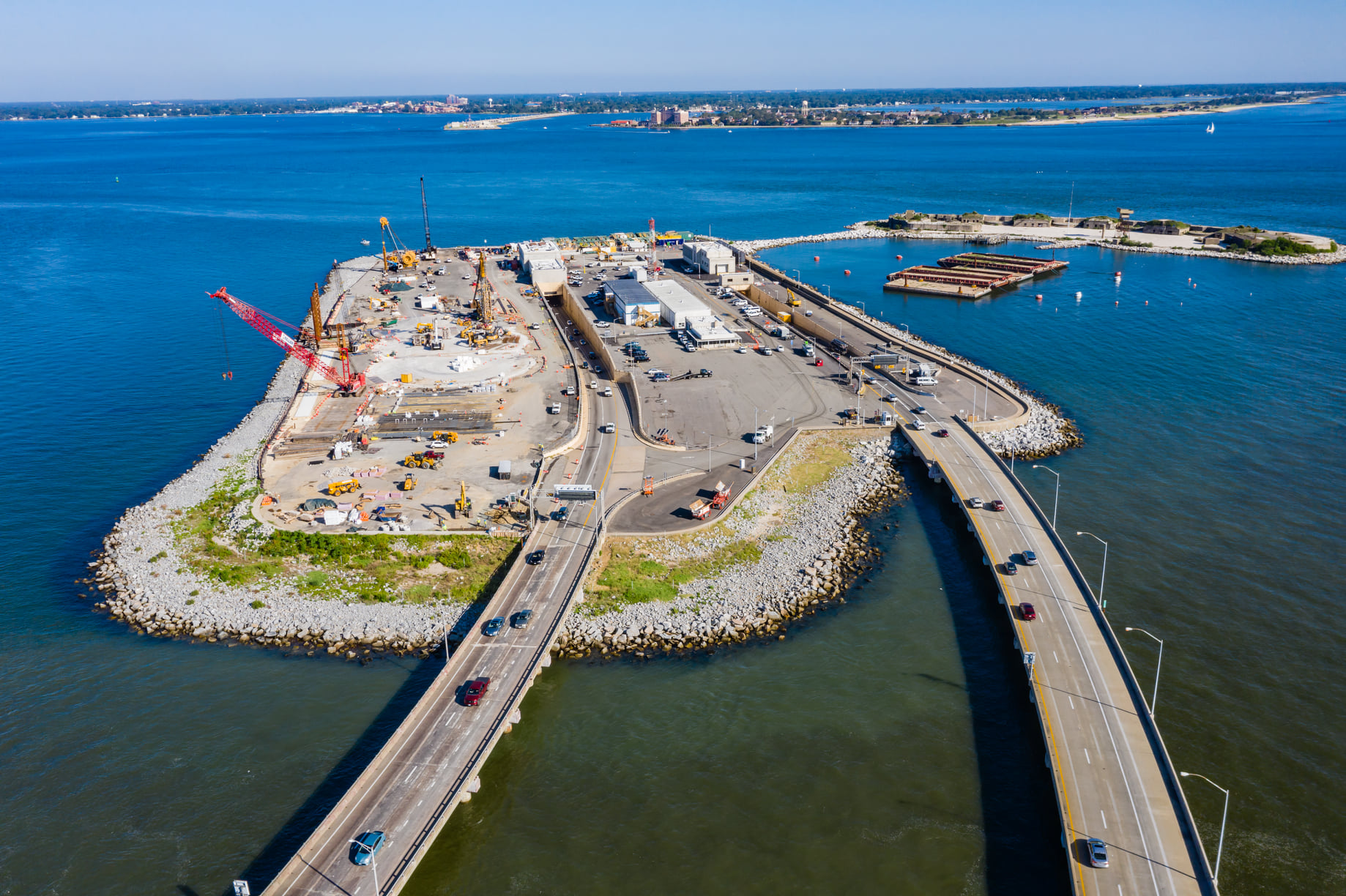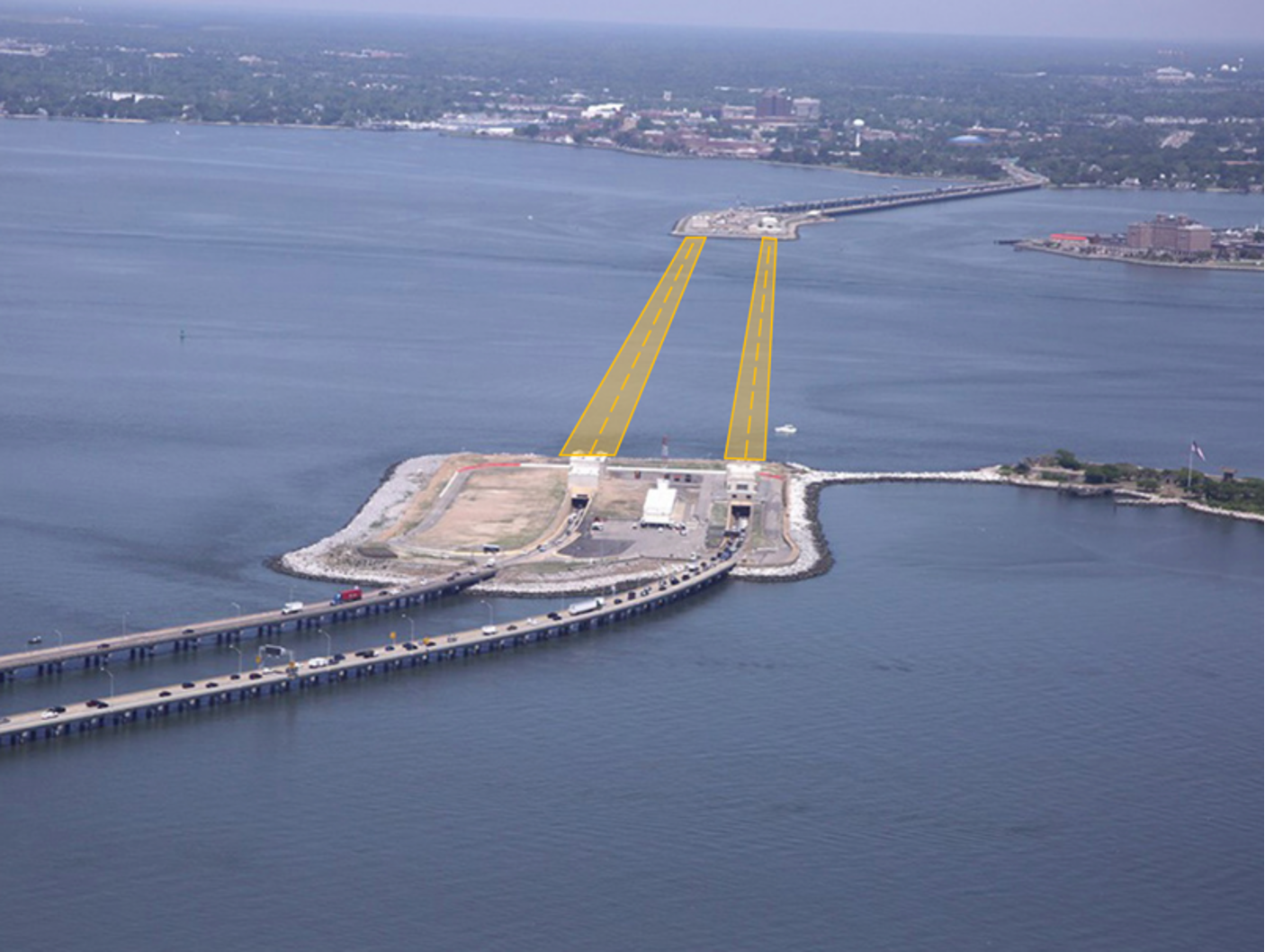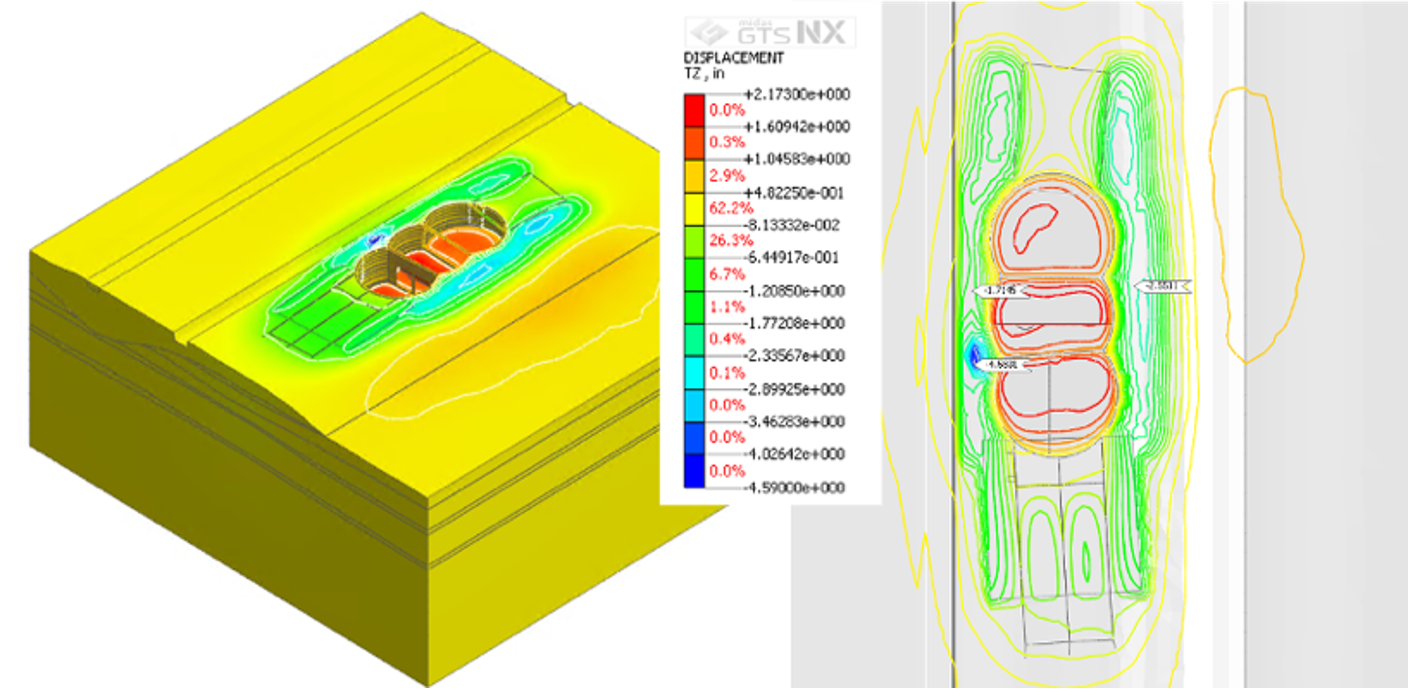The Hampton Roads Bridge-Tunnel (HRBT) Expansion Project is intended to provide congestion relief for the Hampton Roads area in Virginia by increasing the capacity of the existing Chesapeake Bay crossing. The current I-64 Hampton Roads Bridge-Tunnel (HRBT) is a 3.5-mile facility with two 2-lane 7,500 feet long immersed tube tunnels connecting artificial islands, which are connected to the shore by bridge. Traffic through the facility exceeds 100,000 vehicles per day during peak summer traffic. The HRBT project will widen the four-lane segments of the I-64 corridor in the cities of Hampton and Norfolk. Twin two-lane 41.5ft (12.7m) diameter bored-tunnels will be built west of the existing eastbound tunnel. The current eastbound and westbound tunnels are expected to accommodate all westbound traffic upon completion of the project.
Independent Design Verification Services for Bored Tunnel and Tunnel Approach Structures:
Gall Zeidler Consultants is providing independent design verification (IDV) services for the tunnel and tunnel approach structures for Mott MacDonald (MM). MM is the designer for the underground works part of the Hampton Roads Connector Partners Joint Venture. The IDV services include a full structural verification of the segmental tunnel lining design for the large diameter dual-bore TBM tunnel. GZ is also performing various structural calculations pertaining to the large diameter Bi-cell and Tri-cell tunnel launch and reception shafts located on the north and south islands, respectively. In addition to the IDV services, GZ is part if the on-site QA/QC inspecting team. GZ staff have performed inspections of the shaft waterproofing and concrete as well as serving as TBM shift inspectors.


